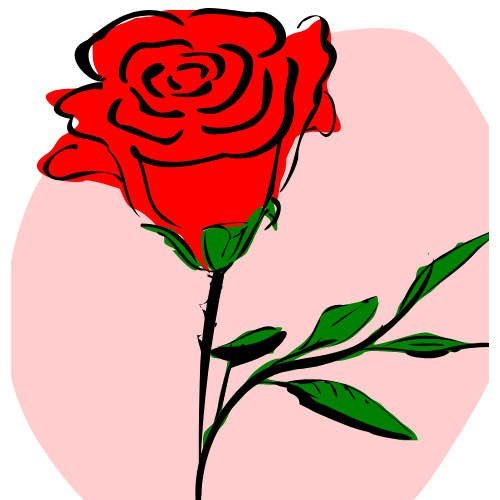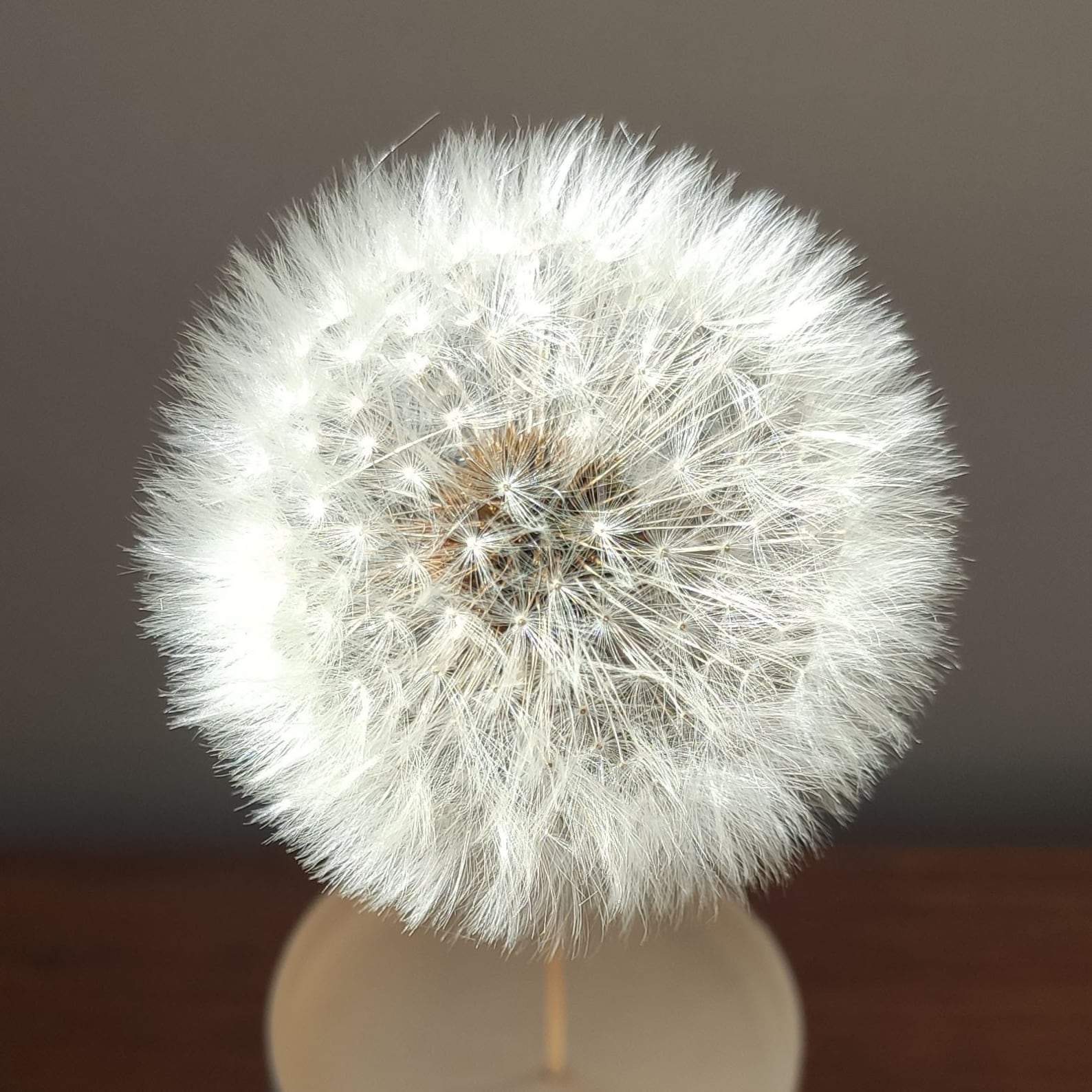


Dandelions are among the most recognizable wildflowers in the world, often seen as a common weed, yet they hold a deep history and rich symbolism across various cultures. Their vibrant yellow blossoms and fluffy seed heads have long been revered for their resilience, beauty, and medicinal properties. In recent years, dried dandelion has gained popularity in floral arrangements for their delicate appearance and symbolic meanings.
In this article, we will explore the history of dandelions, their symbolism, and their role in dried floral arrangements. We’ll delve into why dandelions have held a place in human culture for centuries and how they continue to inspire creativity in floral design today.
Dandelions (scientifically known as Taraxacum officinale) are believed to have originated in Europe and Asia, though they now grow all over the world. Their name comes from the French phrase "dent de lion," meaning "lion’s tooth," a reference to the jagged edges of the leaves. The plant has been known for thousands of years, and early records show that ancient Egyptians, Greeks, and Romans utilized dandelions for medicinal purposes.
The Greeks, for instance, used dandelions in herbal remedies, recognizing their diuretic properties. The ancient Chinese were also known to use dandelions to treat digestive disorders and inflammation, showcasing how widespread their medical use became across civilizations. In the Middle Ages, dandelions were valued in Europe for their healing properties, including their ability to detoxify the liver and treat skin problems.
Over time, dandelions became an essential part of folk medicine in many cultures, where the entire plant—roots, leaves, and flowers—was utilized for a variety of treatments. This connection to healing made dandelions a significant symbol of wellness, health, and regeneration.
Dandelions are surrounded by rich folklore, often involving themes of magic, transformation, and luck. In Europe, dandelions were often considered mystical flowers. It was believed that if you blew on a dandelion seed head and all the seeds flew away, your wish would come true. This custom, which persists today, reflects the symbolism of hope, dreams, and the potential for new beginnings.
Another widespread belief was that the number of seeds left on the puffball after blowing represented how many children you would have or how many years it would take for a wish to come true. In Scotland, dandelions were thought to bring good fortune and protect against negative energy. Their bright yellow flowers, often associated with the sun, made them a symbol of warmth, vitality, and joy.
In North America, dandelions were used by Native American tribes for both medicinal and spiritual purposes. Some tribes believed that the flower had the power to heal not only physical ailments but also spiritual wounds. Its abundance and ability to thrive in even the most challenging environments contributed to its symbolic representation of resilience and survival.

Dandelions hold numerous symbolic meanings, many of which have transcended time and culture. Their commonality in nature belies the depth of the messages they can convey. Let’s explore some of the key symbolic meanings of dandelions and how they are reflected in floral arrangements.
Perhaps the most potent symbolism associated with dandelions is their resilience. Dandelions are known for growing in places where many other plants struggle to survive, including between cracks in pavement or in poor soil. Their ability to bloom in less-than-ideal conditions represents resilience, strength, and the capacity to endure hardship.
This resilience has made dandelions a powerful metaphor for human strength and determination. In floral arrangements, dried dandelion can symbolize the power of perseverance, making them a meaningful addition to bouquets intended for those going through difficult times or embarking on new challenges.
Dandelions have a long history of being used for their medicinal properties, with their leaves, roots, and flowers serving as natural remedies for a variety of ailments. Because of this, dandelions are often seen as symbols of healing, renewal, and good health.
In a dried floral arrangement, dandelions can represent the healing process—whether it’s physical recovery from illness or emotional healing from a personal hardship. They can serve as a reminder of the body’s and spirit’s capacity for regeneration and growth.
One of the most well-known associations with dandelions is the tradition of making a wish while blowing on a dandelion seed head. As the seeds float away, they carry with them a sense of hope, optimism, and new possibilities. The act of releasing dandelion seeds into the wind symbolizes letting go of the past and embracing the future.
Dried dandelion in floral designs can therefore represent hope and new beginnings. Whether included in arrangements for weddings, graduations, or other life milestones, they embody the belief that the future holds great potential and that dreams can take flight.
Dandelions undergo a dramatic transformation during their life cycle, from a bright yellow flower to a spherical puffball of seeds. This transformation is often seen as a metaphor for the stages of life, from birth and growth to change and renewal. The seeds that are carried away by the wind represent the spreading of life’s possibilities and the interconnectedness of all living things.
In spiritual and memorial floral arrangements, dried dandelions can symbolize the passage of time and the inevitability of change. They remind us of the transient nature of life and the beauty that comes from embracing each stage of existence.
For many people, dandelions evoke fond memories of childhood—picking the yellow flowers to make crowns or blowing the fluffy seed heads to make wishes. The dandelion’s sunny disposition and its association with carefree childhood days make it a symbol of joy, innocence, and simplicity.
In this context, dried dandelion in floral arrangements can bring a sense of lightness and joy. They can be used to evoke feelings of nostalgia and to celebrate the simple pleasures of life.
With the rising trend of dried flowers in home decor and floral arrangements, dandelions have gained newfound appreciation for their unique appearance and symbolic depth. Dried dandelions, particularly their seed heads, add a whimsical and ethereal quality to arrangements, making them perfect for a variety of design styles.
Dried dandelions fit beautifully within rustic and bohemian floral arrangements, where natural and organic elements are celebrated. Paired with grasses, wildflowers, and dried foliage, dandelions add a touch of wild beauty and spontaneity. Their delicate puffballs and soft, neutral tones create a harmonious contrast to more robust blooms like roses or sunflowers.
For boho weddings, dried dandelion can be included in bridal bouquets or table centerpieces, symbolizing the couple’s hope for a bright future together. They can also be used in wreaths and wall hangings, bringing a touch of nature’s magic indoors.

Dried dandelions also work well in minimalist arrangements, where their understated elegance can take center stage. When used sparingly, they add a subtle texture and lightness to arrangements without overwhelming the design. Their simple beauty can complement modern interiors, where clean lines and natural elements are emphasized.
In a minimalist arrangement, a single dried dandelion puffball in a sleek vase can make a striking statement, symbolizing the beauty of simplicity and the power of small, meaningful gestures.
Given their association with wishes and hope, dried dandelions are often used in personalized gifts. Dried dandelion seeds encased in glass or resin are popular as keepsakes, symbolizing the hope that the recipient’s dreams will come true. These delicate gifts can be included in shadow boxes, framed floral art, or even handmade jewelry, creating a meaningful and personal connection to the giver.
In floral arrangements meant to celebrate life’s special moments—such as a new job, the birth of a child, or the start of a new journey—dried dandelion can represent the promise of new opportunities and the power of dreams.
The history and symbolism of dried dandelions in floral arrangements reflect the flower’s enduring legacy as both a medicinal plant and a beloved symbol of resilience, hope, and transformation. From their early use in ancient herbal medicine to their place in modern floral design, dandelions have captured the hearts of people across cultures and generations.
In dried form, dandelions continue to inspire creativity and meaning in floral arrangements. Whether used to symbolize strength in adversity, the joy of new beginnings, or the simplicity of childhood nostalgia, dried dandelions bring a unique beauty and depth to any design. Their ability to thrive in the most unexpected places serves as a reminder of the human spirit’s capacity for growth, renewal, and the pursuit of dreams.
As we continue to explore the possibilities of dried flowers in floral arrangements, dandelions stand out as a timeless and versatile element, connecting us to nature’s beauty and the symbolic richness that these humble flowers represent.